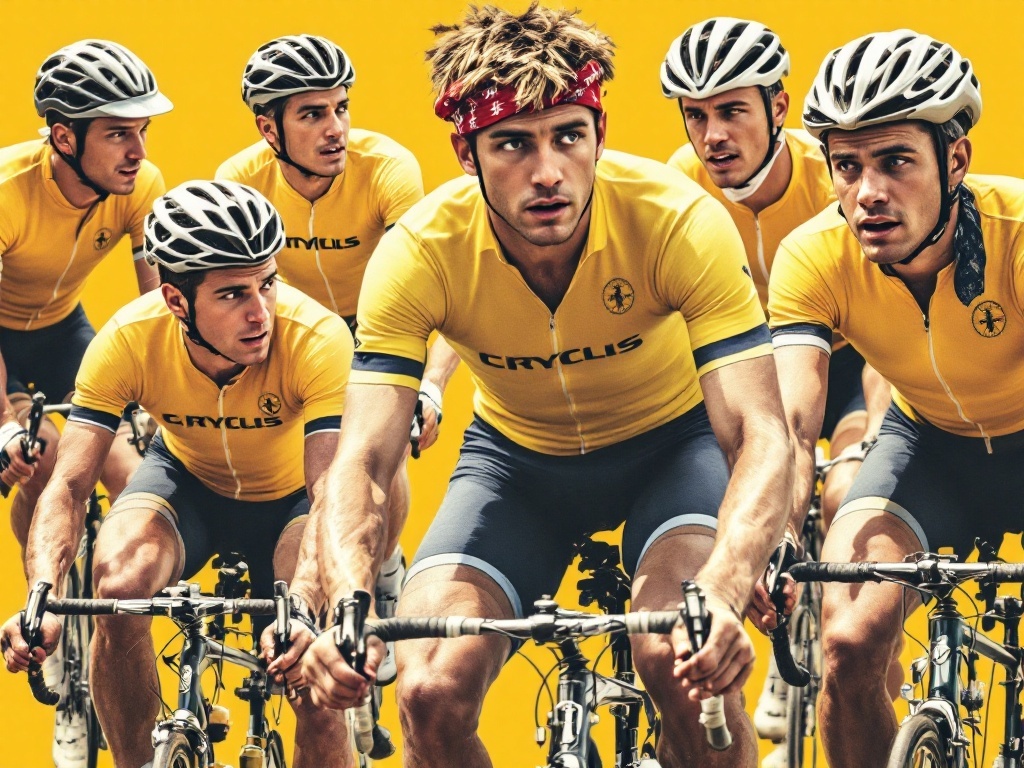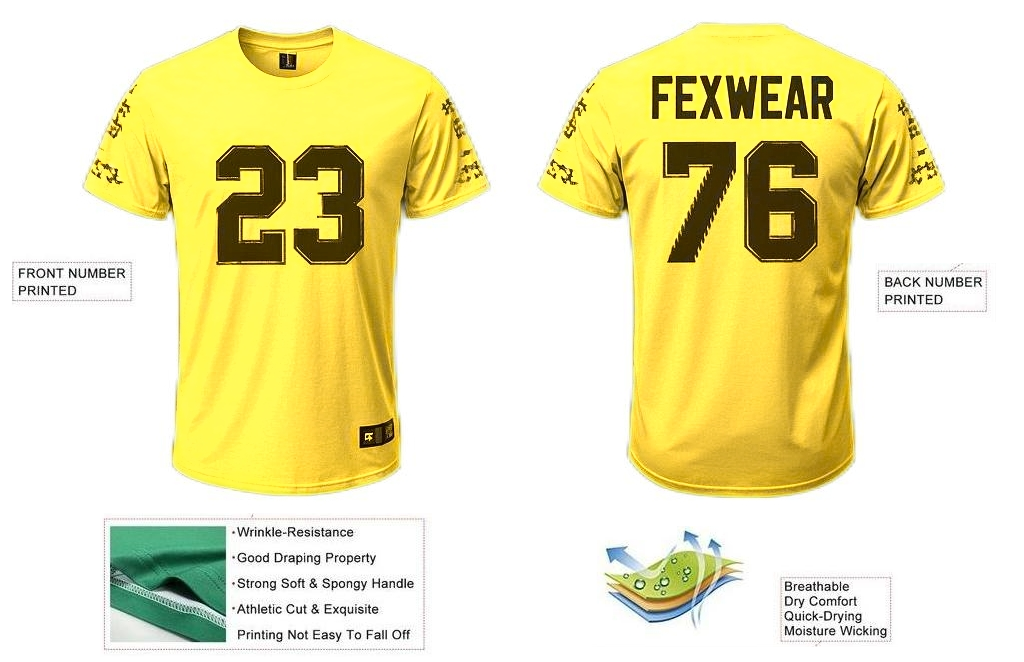The yellow jersey (maillot jaune) signifies the leader in professional cycling, prominently featured in the Tour de France. It is awarded to the rider with the fastest cumulative time across all race stages. The cyclist with the lowest overall time dons the yellow jersey.
Key Points about the Yellow Jersey:
- Indicates Leadership: The yellow jersey is given to the top competitor in the general classification standings.
- Historical Background: Initially, the first two Tours de France utilized a green armband to identify leaders. A brief points system was introduced before reverting to time-based rankings in 1912.
- First Recipient: Eugène Christophe was the inaugural wearer of the yellow jersey in 1919, following a hiatus due to World War I.
- Choice of Color: The yellow hue matched the paper of the L’Auto newspaper, though some suggest the dye was simply easy to source at the time.
Notable Facts about the Yellow Jersey:
- Record Holder: Eddy Merckx holds the record for wearing yellow for 96 days, more than any other cyclist. Other legends include Bernard Hinault (75 days), Miguel Induráin (60 days), and Chris Froome (59 days).
- Total Awards: By 2021, 295 riders had claimed 2,208 yellow jerseys throughout Tour de France history.
- Unexpected Wins: Fabian Cancellara wore the yellow jersey 29 times but never won the Tour, while champions like Tadej Pogačar and Jean Robic claimed victory with just two yellow jerseys each in their careers.
Race officials award the yellow jersey after each stage. The leader retains it until the final day’s champion is announced. Additionally, leaders receive daily bonuses known as “rent” for wearing yellow.
History of the Yellow Jersey

The yellow jersey was not always a part of the Tour de France. In the inaugural race in 1903, leaders were marked with a green armband. The jersey made its debut in 1919, after World War I had interrupted the competition. Henri Desgrange, the race director, sought a bold way to signify the leader, choosing yellow to match the pages of the race’s sponsor, L’Auto-Vélo. It’s intriguing how a simple color choice evolved into such a significant symbol in cycling.
Controversy Over Its Introduction
Debates continue regarding the origins of the jersey. Philippe Thys, a three-time Tour champion, claimed that Desgrange offered him a yellow jersey in 1913, which he declined. However, no contemporary newspapers support this assertion.
The first yellow jersey was awarded to Eugène Christophe in 1919. Crafted from wool, he received it just before the Grenoble-Geneva race. Upon putting it on, Christophe humorously remarked, “I look like a canary!” The crowd echoed his sentiment, calling out “canary!” as he rode by. This moment wasn’t merely about a jersey; it marked a pivotal point in cycling history. The evolution of such a simple item into a meaningful symbol is truly fascinating.
The design of the jersey has changed over time. Early versions were wool, whereas modern ones utilize advanced materials. Today, wearing the yellow jersey signifies leadership in the Tour de France, and the choice of yellow continues to resonate with cycling fans.
Notable Yellow Jersey Wearers
- Eddy Merckx: 96 days in yellow.
- Others include Bernard Hinault (75 days), Miguel Induráin (60 days), and Chris Froome (59 days).
Merckx’s record seems insurmountable, although contemporary riders like Froome come close. The wool jerseys of the past must have been uncomfortable—thankfully, today’s fabrics are far superior!
First Wearer of the Yellow Jersey

Eugène Christophe was the first cyclist to wear the yellow jersey during the 1919 Tour de France. He donned this iconic jersey during Stage 11 from Grenoble to Geneva on July 19, 1919. Henri Desgrange, the race director, created the yellow jersey to indicate the leader of the competition.
Christophe’s Experience with the Yellow Jersey
- Christophe found wearing the yellow jersey uncomfortable, as spectators called him “canary” as he passed.
- Despite the teasing, he continued to wear it throughout part of the 1919 race.
Philippe Thys’ Claim
- Three-time winner Philippe Thys later stated that race organizers offered him the yellow jersey in 1913, which he declined, fearing he would be targeted by rivals.
- However, no records from that year corroborate this tale. Thys first mentioned it when he was 67, over 25 years later.
Yellow Jersey History
- The yellow jersey was introduced in 1919 but did not return until Stage 9 of the 1920 Tour.
- It gradually evolved into the Tour’s most recognized symbol.
Why Yellow?
- The Tour resumed in 1919 after a four-year interruption due to World War I.
- Race organizers opted for yellow as it was one of the easiest colors to find post-war, given the scarcity of materials during Europe’s recovery.
The evolution of this simple color choice into a legendary symbol is captivating. The jersey’s journey illustrates how sports emblems can transcend their original practical purposes.
Material and Design

The materials and design of the yellow jersey have transformed significantly since 1919. This evolution reflects the adaptation of sports gear to meet new requirements.
Evolution of Materials
- Wool Origins: The first yellow jersey, awarded to Eugène Christophe on July 18, 1919, was made from wool. While it held up well, it became heavy when wet. Christophe humorously noted that the yellow color made him look like a canary.
- Synthetic Upgrades: By the late 1940s, synthetic fabrics began to replace wool. In 1948, Sofil provided synthetic blends for the jerseys, utilizing artificial yarn that was lighter and more durable.
- Today’s Technology: Modern jerseys are crafted from high-performance polyester. This fabric effectively addresses three main issues:
- Sweat management to stay dry
- Sun protection for long outdoor rides
- Enhanced airflow to minimize drag
Key Design Features
- Color Significance: Yellow was chosen to match the color of L’Auto-Vélo newspaper.
- Tribute to Henri Desgrange: Designers incorporated HD into the waistline in 1940 as a tribute to the founder after his passing.
These thoughtful updates ensure the yellow jersey remains both meaningful and functional for the leaders of the Tour de France.
Significance and Priority
The yellow jersey (maillot jaune) represents the pinnacle of achievement in cycling, particularly in the Tour de France. It is awarded to the rider with the lowest overall time across all stages, marking them as the overall leader.
Wearing the yellow jersey signifies dominance, establishing the rider as the preeminent competitor. They retain the jersey throughout the stages, affirming their lead in the general classification (GC).

Priority of Jerseys
If a cyclist leads multiple classifications, they will still wear the yellow jersey, which takes precedence. The yellow jersey represents the general classification (GC) leader and is prioritized above the green, polka dot, and white jerseys. The green jersey is awarded to the fastest sprinter, the polka dot jersey to the strongest climber, and the white jersey to the best rider under 26. Only the GC leader wears yellow, while others display their respective specialty jerseys. This system underscores the yellow jersey’s role as the definitive symbol of leadership in the Tour de France.
Mandatory Wearing of the Leader’s Jersey
Leaders are required to wear their jersey for the entirety of each stage, including during pre-race sign-in, the race itself, and post-race events like press conferences. Maintaining the jersey’s visibility at all times reinforces its status as the ultimate symbol of leadership.
| Category | Details |
|---|---|
| Mandatory Wearing of the Leader’s Jersey | Leaders must wear their jersey for the full stage, including pre-race sign-in, the race itself, and post-race events like press conferences. Keeping the jersey visible at all times reinforces its status as the ultimate leadership symbol. |
| Most Yellow Jerseys Won |
|
| Active Riders |
|
| Riders Without General Classification Wins |
|
| Other Notable Holders |
|
| Shortest Time in Yellow |
|
Recent Winners
Tadej Pogačar and Jonas Vingegaard have recently dominated the Tour de France’s yellow jersey. Their performances have been remarkable in the race’s history.
Tadej Pogačar’s Victories
- 2020 Tour de France: Pogačar became the first Slovenian to win the yellow jersey. At just 21, he was the second-youngest winner ever. He also claimed the white and polka-dot jerseys, an achievement not seen since Eddy Merckx.
- 2021 Tour de France: Pogačar successfully defended his title, holding the yellow jersey from stage eight to the finish. His strong performances in crucial stages solidified his win.
- 2024 Tour de France: Pogačar reclaimed the yellow jersey in Stage 4 and maintained it until the end, winning six stages and setting a record of 39 leader’s jerseys in a single Grand Tour year.
Jonas Vingegaard’s Wins
- 2022 Tour de France: Vingegaard earned his first yellow jersey, holding the lead until the race concluded.
- 2023 Tour de France: Vingegaard secured his second consecutive title, finishing 7 minutes and 29 seconds ahead of Pogačar, solidifying his status as a top contender.
The rivalry between these two riders drives them to new heights, showcasing their place among the greatest competitors in Tour history.
Summary

The yellow jersey represents cycling’s pinnacle of achievement. It symbolizes more than just speed; it embodies determination, strategic planning, and unwavering commitment. Only the elite cyclists earn it by conquering the most challenging races.
Legends like Merckx have worn it, and new champions like Pogačar continue this tradition today. This iconic jersey inspires young riders everywhere.
As the Tour de France progresses, I look forward to witnessing more incredible stories of ambition and triumph.

